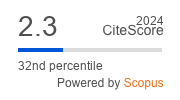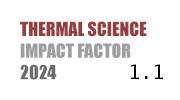ABSTRACT
This research aims to enhance the efficiency of polycrystalline silicon solar photovoltaic panels by addressing the dual challenges of dust accumulation and tem-perature variations. The study investigates the effects of applying a hydrophobic graphene nanocoating on the top surface of the panels to prevent dust buildup, coupled with a top water-cooling system to regulate panel temperature. Outdoor experiments were conducted in Coimbatore, India, from 8:00 a. m. to 4:00 p. m. under sunny conditions for 40 days. A total of eight identical photovoltaic panels were tested with various configurations, and performance parameters such as glass temperature, Tedlar® temperature, output power, solar radiation, ambient temperature, and wind speed were recorded. Experimental results show that the graphene nanocoating reduces panel temperature by 9.36% compared to the dusty panel and 3.8% compared to the uncoated, manually cleaned panel by day 40. The nanocoating alone increased power output and efficiency by 4.16% and 3.3%, respectively, compared to the uncoated, no-cooling panel. Additionally, the nano-coated, top water-cooled panels showed improvements of 16.87% in output power and 13.22% in efficiency compared to the uncoated, no-cooling panel, and 3.11% in power and 2.82% in efficiency compared to the uncoated, water-cooled panels. These results demonstrate that the combined application of graphene nanocoating and water cooling effectively enhances the performance and longevity of photovoltaic modules by reducing dust accumulation and regulating temperature.
KEYWORDS
PAPER SUBMITTED: 2024-08-03
PAPER REVISED: 2024-11-04
PAPER ACCEPTED: 2024-12-15
PUBLISHED ONLINE: 2025-02-16
THERMAL SCIENCE YEAR
2025, VOLUME
29, ISSUE
Issue 3, PAGES [2521 - 2533]
- Ilse, K., et al., Advanced Performance Testing of Anti-Soiling Coatings-Part II: Particle-Size Dependent Analysis for Physical Understanding of Dust Removal Processes and Determination of Adhesion Forces, Solar Energy Materials and Solar Cells, 202 (2019), 110049
- Piliougine, M., et al., Comparative Analysis of Energy Produced by Photovoltaic Modules with Anti-Soiling Coated Surface in Arid Climates, Applied Energy, 112 (2013), Dec., pp. 626-634
- Zhang, L., et al., Indoor Experiments of Dust Deposition Reduction on Solar Cell Covering Glass by Transparent Super-Hydrophobic Coating with Different Tilt Angles, Solar energy, 188 (2019), Aug., pp. 1146-1155
- Mozumder, M. S., et al., Recent Developments in Multifunctional Coatings for Solar Panel Applications: A Review, Solar Energy Materials and Solar Cells, 189 (2019), Jan., pp. 75-102
- Abdo, S., Hind, S., Effect of Using Saturated Hydrogel Beads with Alumina Water-Based Nanofluid for Cooling Solar Panels: Experimental Study with Economic Analysis, Solar Energy, 217 (2021), Mar., pp. 155-164
- Almuwailhi, A., Zeitoun, O., Investigating the Cooling of Solar Photovoltaic Modules Under the Conditions of Riyadh, Journal of King Saud University-Engineering Sciences, 35 (2023), 2, pp. 123-136
- Sethiya, A., Cooling Material for Solar PV Module to Improve the Generation Efficiency, Materials Today: Proceedings, 47 (2021), Part 19, pp. 7064-7066
- Elbreki, A. M., et al., Experimental and Economic Analysis of Passive Cooling PV Module Using Fins and Planar Reflector, Case Studies in Thermal Engineering, 23 (2021), 100801
- Al-Amri, F., et al., Innovative Technique for Achieving Uniform Temperatures Across Solar Panels Using Heat Pipes and Liquid Immersion Cooling in the Harsh Climate in the Kingdom of Saudi Arabia, Alexandria Engineering Journal, 61 (2022), 2, pp. 1413-1424
- Sharma, V., Shyam S. C., Performance and Degradation Analysis for Long Term Reliability of Solar Photovoltaic Systems: A Review, Renewable and Sustainable Energy Reviews, 27 (2013), Nov., pp. 753-767
- He, G., et al., Review of Self-Cleaning Method for Solar Cell Array, Procedia Engineering, 16 (2011), Dec., pp. 640-645
- Moghimi, M. A., Ahmadi, G., Wind Barriers Optimization for Minimizing Collector Mirror Soiling in a Parabolic Trough Collector Plant, Applied Energy, 225 (2018), Sept., pp. 413-423
- Elnozahy, A., et al., Efficient energy Harvesting from PV Panel with Reinforced Hydrophilic Nano-Materials for Eco-Buildings, Energy and Built Environment, 5 (2024), 3, pp. 393-403
- Zhang, R., et al., High Performance Photovoltaic/Thermal Subsystem Photoelectric Conversion Solar Cell Coupled Thermal Energy Storage System, Thermal Science, 24 (2020), 5B, pp. 3213-3220
- Fares, E., Yusuf, B., Comparative Performance Evaluation of c-Si and GaAs Type PV Cells with and without Anti-Soiling Coating Using Energy and Exergy Analysis, Renewable energy, 146 (2020), Feb., pp. 1010-1020
- Vedulla, G., Geetha, A., Dust Accumulation on Solar Photovoltaic Panels: An Investigation Study on Power Loss and Efficiency Reduction, Thermal Science, 27 (2023), 4A, pp. 2967-2976
- Bazzari, H. H., et al., Cooling Solar Cells Using Zno Nanoparticles as a Down-Shifter, Thermal Science, 24 (2020), 2A, pp. 809-814
- Zhang, L., et al., Indoor Experiments of Dust Deposition Reduction on Solar Cell Covering Glass by Transparent Super-Hydrophobic Coating with Different Tilt Angles, Solar energy, 188 (2019), Aug., pp. 1146-1155
- Jaszczur, M., et al., Impact of Dust and Temperature on Energy Conversion Process in Photovoltaic Module, Thermal Science, 23 (2019), 4, pp. 1199-1210
- ***, BT Corp Generic Nano Private Ltd., www.bt-corp.co
- Holman, J. P., Experimental Methods for Engineers, McGraw-Hill Education, New York, USA, 2012
- ***, India Meteorological Department Government of India, mausam.imd.gov.in

